Japanese pancake is a beloved breakfast food that has been enjoyed for generations around the world. While pancakes are a staple of many breakfast menus, they are also versatile enough to be served as a satisfying meal at any time of the day. In this article, we will delve into the history of pancakes in Japan, and share some tips and tricks for making the perfect pancake.
What is a Japanese pancake?
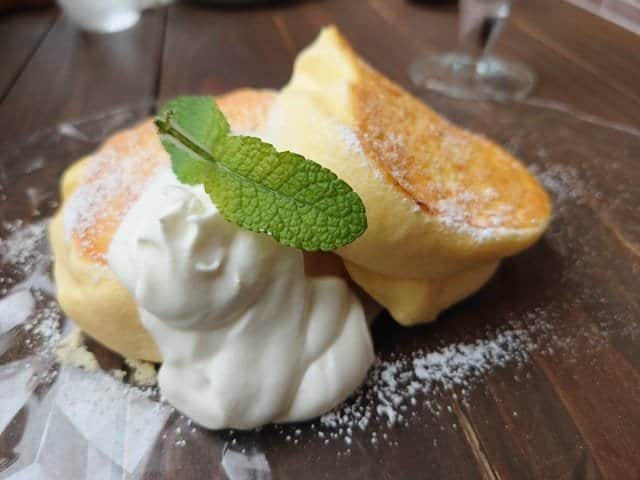
Japanese pancake or hotcake is a type of fluffy and thick pancake typically served as a breakfast or dessert item. They are similar to American pancakes but are generally fluffier and lighter in texture. Locals made Japanese pancakes with a batter that includes ingredients such as eggs, sugar, flour, baking powder, or baking soda. Some recipes may also call for milk, yogurt, or other ingredients to make the hotcakes even more fluffy. Hotcakes in Japan are usually served with sweet toppings such as whipped cream, fruit, syrup, or ice cream. They have become a popular breakfast and brunch item in Japan, and many cafes and restaurants specialize in serving different types of hotcakes. The term “hotcake” is unique to Japan, and the name “pancake” is common worldwide. Larger cities have pancake shops that serve fluffy pancakes that are at least 1cm thick and 10-15cm in diameter.
Japanese pancake History
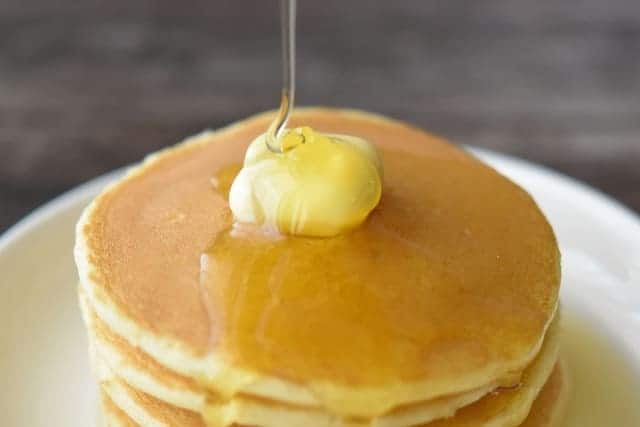
Although no one has recorded the first time pancakes were made, the history of pancakes dates back to ancient Greece, where they baked the flour and water dough on both sides with hot stones. The first mention of pancakes in literature occurred in the 16th century. By the 18th century, pancakes began to appear frequently in cookbooks, and by the 19th century, people from all walks of life ate this.
In Japan, pancakes were introduced during the Meiji Era and became available during the Taisho Era. A magazine introduced what a “pancake” was in 1884, and 1923, locals served it under the name “hat cake” in a department store cafeteria in Tokyo. After that, “Morinaga Hotcake no Moto” was released and gained popularity, and because it was sweet, hotcakes have been a popular breakfast food in Japan for many years.
Types of Japanese pancakes
Souffle

Characterized by a fluffy texture that melts in your mouth. Experts made them by carefully baking the dough mixed with meringue to make it sticky. Souffle pancakes are thicker than traditional pancakes, but not as thick as Japanese hotcakes. It contains a higher ratio of eggs and baking powder, which makes them very light and fluffy.
Thick pancakes
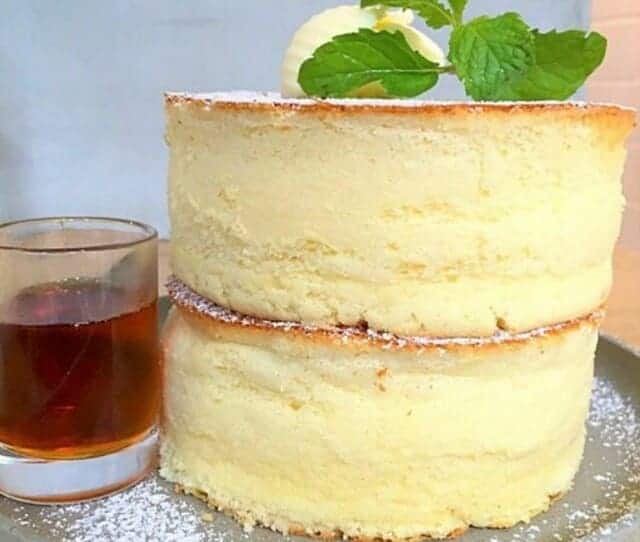
These pancakes are of equal height, crispy on the outside and moist and fluffy on the inside. Locals made them with a batter that contains more eggs and baking powder, which gives them a thicker, fluffier texture than traditional pancakes. Some cooked them on a griddle or in a pan and typically served in a stack of two or three small pancakes.
Thin pancakes

Such as French crepes or Swedish pancakes, are made with a thinner batter that is spread out thinly in a pan to create a large, flat pancake. The batter may or may not contain leavening agents like baking powder, but it typically contains less flour and eggs than other types of pancakes.
What are some popular toppings for hotcakes in Japan?
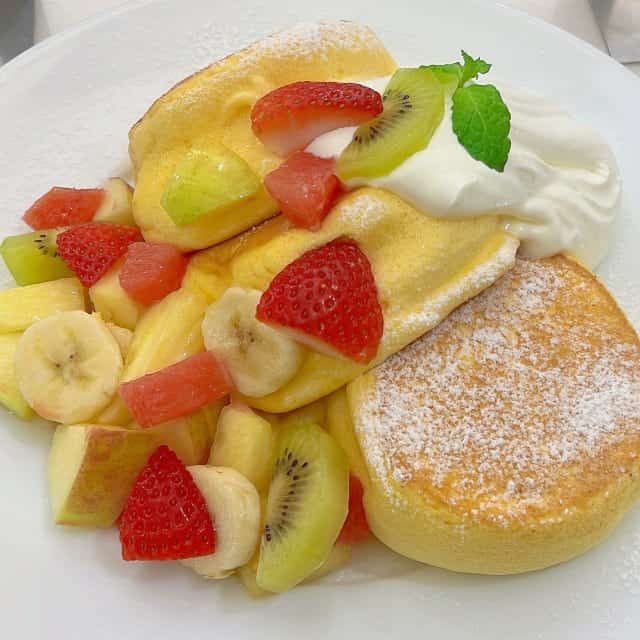
Some popular toppings accompany Japanese pancakes, including classic combinations such as butter and maple syrup, fresh fruit, whipped cream, sweet bean paste, ice cream, honey, cheese, and chocolate sauce. People can use these toppings to enhance the sweetness or create a savory flavor for the hotcakes.
Maple Syrup
Maple syrup is a standard hotcake topping. The sweet aroma and rich taste are irresistible. Not only is it delicious, but it also has many health benefits. However, too much of it can lead to obesity, so be sure to consume it in moderation.
Butter
Topping the pancake with butter makes it rich and luxurious. The hot batter gradually seeps into the butter, creating an indescribable deliciousness.
Ice Cream
Freshly baked pancakes and cold ice cream are the perfect combination. The warm and cool taste creates exquisite harmony in your mouth.
Strawberry
If you put strawberries on top of the pancake, the appearance will be greatly improved. It adds color and brightens up the dining table. The point is to choose fresh strawberries for a more delicious finish.
Banana
Bananas are great with all kinds of sweets. It is also a great topping for hotcakes. Recommended to put it on the dough while it is baking. It’s nice to add a crunchy caramelized one to the finish.
Japanese pancake FAQ
- How do Japanese pancakes differ from traditional American pancakes?
Japanese pancakes are thicker and fluffier than American pancakes due to the use of more eggs and baking powder/soda. They are also sweeter and served with toppings like whipped cream and fruit, and usually served in smaller stacks of 2-3 pancakes, unlike American pancakes typically served as one large pancake.
- Can you find savory pancakes in Japan, or are they always sweet?
Savory hotcakes are available in Japan, even though they are not as prevalent as sweet hotcakes. These hotcakes contain less sugar and can have savory ingredients like cheese, meat, or vegetables. Some examples of savory hotcakes are bacon and egg hotcakes, okonomiyaki hotcakes (containing cabbage and other vegetables), and cheese and spinach hotcakes.
Japanese pancake Recipe
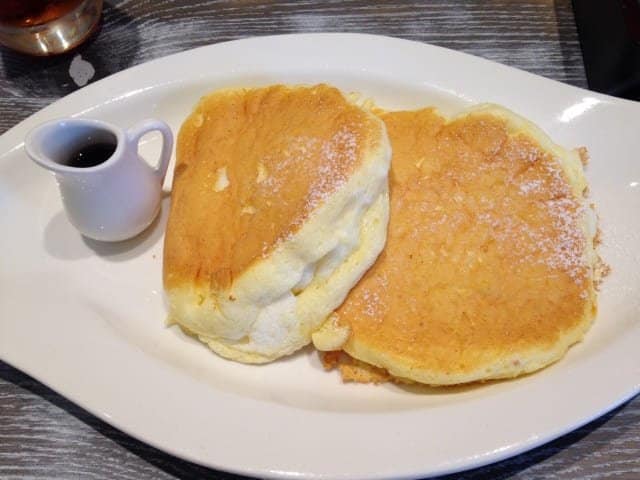
Japanese pancake Ingredients
| Ingredients of Japanese pancake for 1 person | Measurement |
|---|---|
| (A) Sugar-free yogurt | 100g |
| (A) Milk | 50g |
| (A) Egg yolk | 46g |
| (B) Soft flour | 90g |
| (B) Baking powder | 7g |
| Egg white | 46g |
| Sugar | 40g |
| (Cream) Fresh cream | 100g |
| (Cream) Sugar | 20g |
| (Cream) Ice water (for fresh cream) | 15g |
| (Topping) Banana | 10g |
| (Topping) Maple syrup | 14g |
| (Topping) Almond dice | 5g |
| (Topping) Mint leaves | 3g |
How to make Japanese pancake
Cut the banana into 1 cm wide diagonal slices.
Put fresh cream and sugar in a bowl and whisk it while applying ice water until peaks form. Place in a piping bag and chill in the refrigerator.
Put (A) in another bowl and mix with a whisk until uniform. Sift in (B) and mix with a rubber spatula until it is no longer powdery.
Put the egg whites in another bowl and whisk with a hand mixer until whitish. Add the sugar in two batches and whisk until stiff peaks form.
Pour 1/3 of the batter into a medium-heated frying pan and cover with a lid. Heat over low heat for about 2 minutes until the surface is bubbly, then turn over and grill for another minute.
Arrange on a plate, squeeze out the cream you made, top with banana and the rest of the toppings, and you’re done.
Where to buy Japanese pancakes
crisscross (クリスクロス)
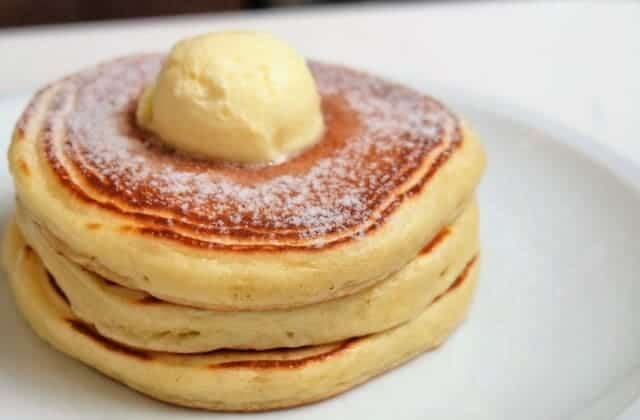
Their buttermilk-rich batter has a rich and deep flavor. The butter on top is cute, and adding whipped cream as a topping makes it even more delicious. In addition to classic buttermilk pancakes, there are pancakes that are perfect for breakfast: pancakes with sausage and a fried egg.
RAINBOW PANCAKE (レインボーパンケーキ)
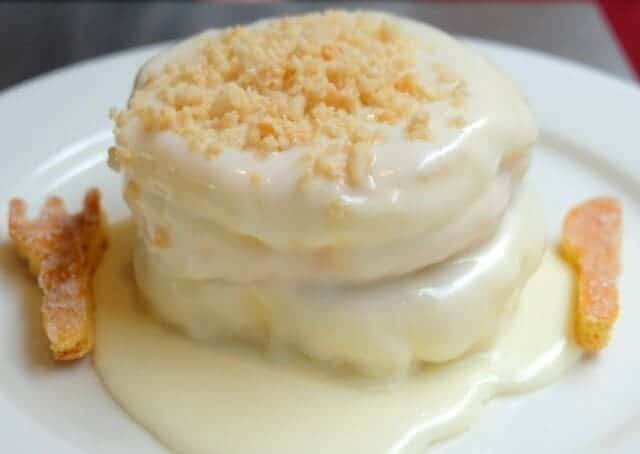
A melting texture. It is a pancake that looks the strongest with plenty of macadamia nut sauce. After they baked the dough, they further baked it in the oven, giving it a fluffy texture. It is a popular cafe that has been loved for many years and has a constant queue.
Riz Labo Kitchen (リズラボキッチン)

This shop serves pancakes in Omotesando that even people who don’t like flour can eat. They serve gluten-free pancakes made with 100% rice flour. The fluffy dough has a slight sweetness of rice, and you can enjoy the aftertaste.
Final Thoughts

Japanese pancakes or hotcakes are unique and delicious dish that everyone should try at least once. Whether you prefer sweet or savory flavors, there are many variations of hotcakes in Japan that will surely satisfy your taste buds. So, if you have the opportunity to try Japanese hotcakes, go for it and enjoy this fluffy and indulgent treat!
You can check some Japanese bread that we know you would like to try too.



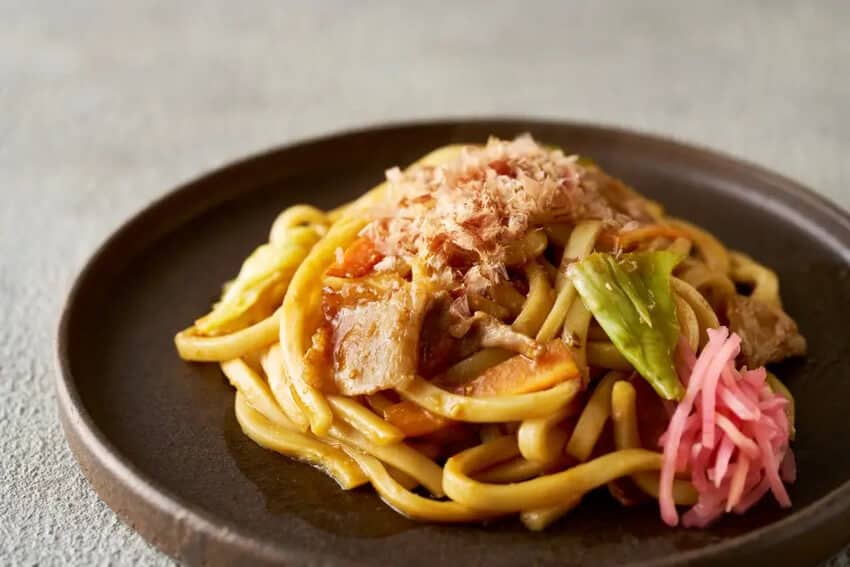
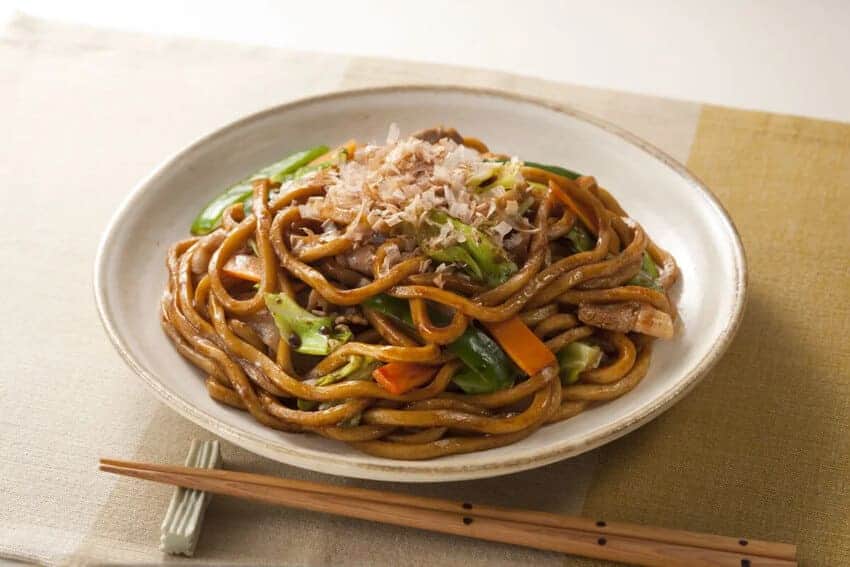

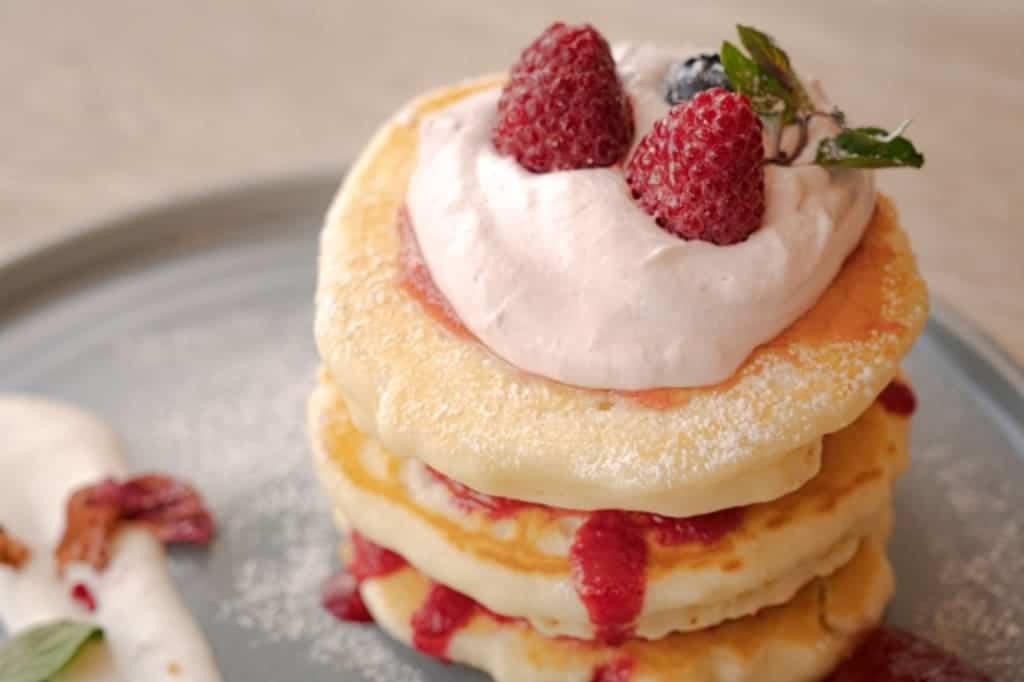
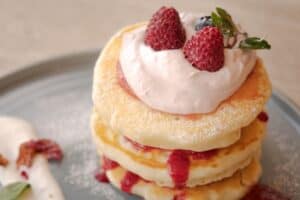
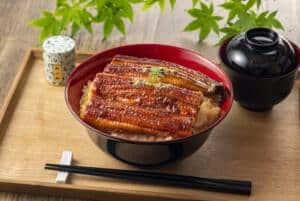
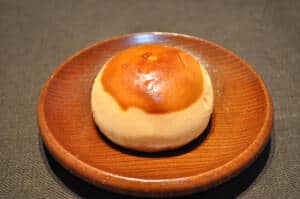
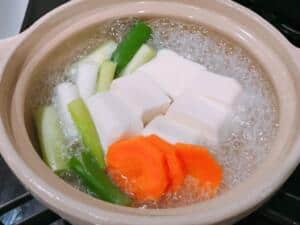
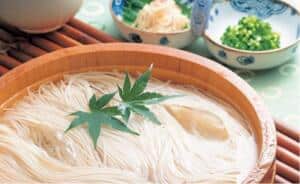
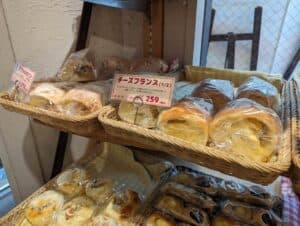
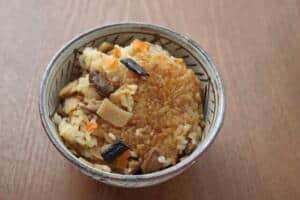
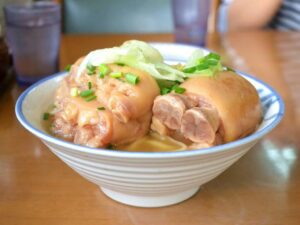
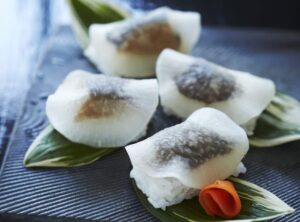
Comments